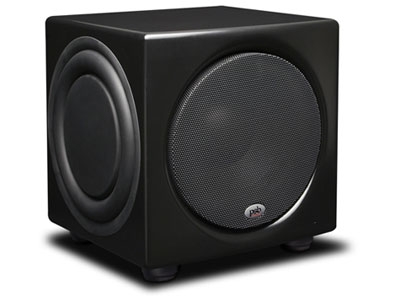PSB Synchrony Home Theater Speaker System Page 2

Full disclosure: I've known PSB founder Paul Barton professionally for some 20 years. And his notions of good sound happen to agree with mine. Same goes for his ideas on where to make the inevitable compromises in any speaker design. Over those 20 years, I've never heard any bad PSBs - nor any as good as the Synchrony One towers. The Ones are rubbing elbows with Good As It Gets - granted, for a hefty stack of Benjamins, but a shorter one than that for any similar speakers I can think of.
Stereo listening revealed even, smooth, and extended response stretching from nearly the lowest octave to audibility's highest limits and beyond. The towers' bass octaves were powerful, well-supported, and free of gaps or peaky "wolf notes" in a way that very few one-piece speakers can match - going a long way toward conjuring up the excitement of live music in a hall, where big dimensions eliminate the hi-fi "tell" of room-induced bass bumps.
A tour of familiar vocal checkpoints showed the Synchrony Ones to be equally accurate through the remaining octaves, too. Even the most low/midrange-sensitive voices, such as Mark Knopfler's, proved utterly free of colorations such as "hoo," "honk," "chestiness," or "cupped" or muffled sound. Treble was very extended and ruthlessly even, which on the one hand eliminates any hint of "tizz" or splatter but on the other will do nothing whatsoever to mitigate recordings (or rooms) that tend too far toward hardness or brightness.
With a nod to Barton's first career as a professional violinist, I cued up a CD of Itzhak Perlman playing the Stravinsky Violin Concerto - and was rewarded with riveting, crystalline sound. The Synchrony towers produced a phantom, centered violinist so solid and dimensional, I had to restrain myself from confirming that the center speaker wasn't somehow playing (it wasn't). Every nuance of Perlman's lusty bowing was electrifyingly defined. As for stereo imaging, well, it gets no better: On the first movement's fugal episode in the strings, each section was wonderfully defined in space, clearly demarcating the seating divisions from the first fiddles to the seconds, the violas, and then the cellos.
Rock and jazz were just as impressive. Brushwork on hi-hat and cymbals was particularly noteworthy: airy, crisp, spacious, and mesmerizingly clear.








































